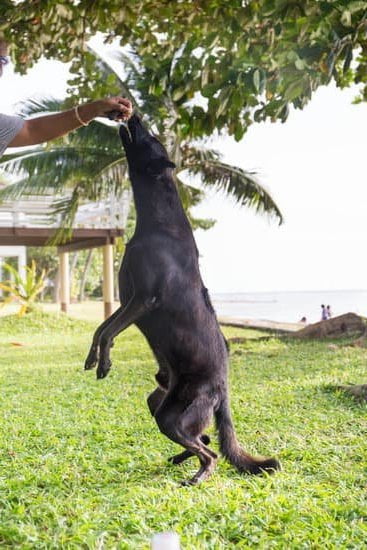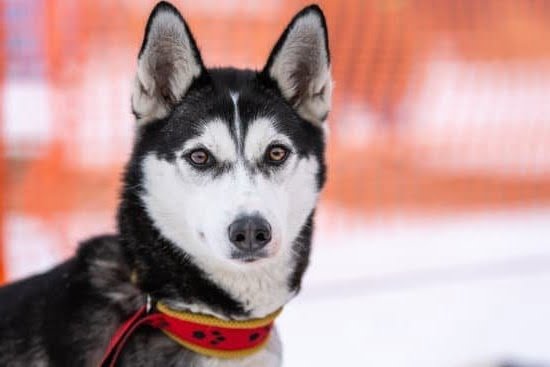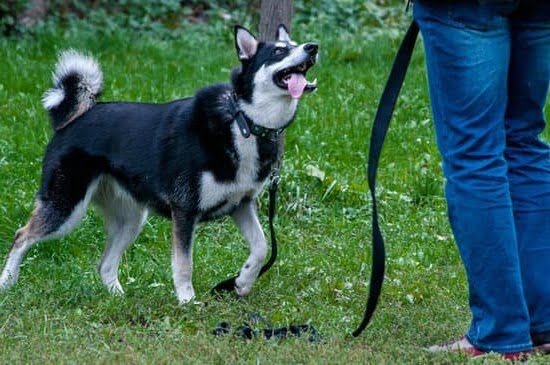Are you interested in learning how to train dogs for search and rescue? Search and rescue dog training is a crucial aspect of disaster response and public safety, as these specially trained dogs play a vital role in locating missing persons and survivors in various emergency situations. The history of search and rescue dog training dates back to ancient times, and the importance of this specialized form of canine training continues to grow in modern society.
When it comes to search and rescue dog training, selecting the right breed is essential. Not all dogs are suited for this type of work, and it’s important to understand what characteristics are necessary for a successful search and rescue dog. Training these animals begins with basic obedience skills, followed by scent training, simulated search scenarios, physical conditioning, agility training, advanced techniques such as scent tracking and detection, as well as certification requirements.
In this article, we will explore the different aspects of training dogs for search and rescue in order to provide insights into this highly specialized field. From understanding the importance of obedience in search and rescue situations to advanced techniques for wilderness or urban rescues, we will delve into the comprehensive process of preparing these incredible animals for their life-saving work.
So let’s dive into the world of search and rescue dog training to understand what it takes to train these remarkable canines effectively.
Selecting the Right Dog Breed for Search and Rescue
When it comes to selecting the right dog breed for search and rescue work, certain characteristics are essential for a successful partnership between the dog and their handler. Some of the key qualities to look for in a search and rescue dog include intelligence, agility, strength, endurance, determination, and a strong sense of smell. These traits are vital in enabling the dog to effectively navigate various terrains, locate missing persons, and alert their handler to their findings.
Characteristics to Look for in a Search and Rescue Dog
In addition to the aforementioned qualities, search and rescue dogs should also exhibit good socialization skills, as they will often be working closely with other dogs and handlers in high-stress situations. They should be well-behaved, able to focus on the task at hand, and have a strong bond with their handler. Additionally, a strong prey drive is important for scent tracking and detection work.
Popular Dog Breeds for Search and Rescue Work
While many different breeds can excel in search and rescue work, some of the most popular choices include German Shepherds, Belgian Malinois, Labrador Retrievers, Golden Retrievers, Border Collies, Bloodhounds, and Australian Shepherds. Each of these breeds possesses many of the necessary traits needed for effective search and rescue work. However, it’s important to note that individual temperament and personality play a significant role in a dog’s suitability for this type of training.
Given these considerations being critical factors when choosing the right breed for search and rescue work-potential handlers should thoroughly research their options before making a decision. Evaluating these factors carefully will help ensure that the selected dog has the best chance of success in this demanding but crucial field.
Basic Obedience Training for Search and Rescue Dogs
Basic obedience training is a crucial foundation for search and rescue dogs, as it ensures that they can follow commands and respond appropriately in high-stress situations. It is essential for search and rescue dogs to have a strong obedience basis in order to effectively assist in finding missing individuals. The key to successful training lies in establishing clear communication between the handler and the dog, building trust, and reinforcing positive behavior.
The first step in basic obedience training for search and rescue dogs involves teaching them fundamental commands such as sit, stay, come, down, and heel. These commands are essential for maintaining control over the dog during search missions and ensuring their safety as well as that of the handlers and any potential victims. Various training techniques, including positive reinforcement and consistency, are used to teach these commands effectively.
Consistent training sessions with frequent practice are crucial for solidifying obedience skills in search and rescue dogs. Handlers must maintain patience, persistence, and a calm demeanor while training their canine partners. Additionally, incorporating obedience training into daily routines helps to reinforce the learning process and strengthen the bond between the handler and the dog. Overall, basic obedience training lays the groundwork for further specialized training that prepares search and rescue dogs to effectively carry out their life-saving duties.
Scent Training for Search and Rescue Dogs
Scent training is a crucial aspect of preparing dogs for search and rescue missions. A dog’s sense of smell is vastly superior to that of humans, making them invaluable in locating missing persons in various environments. To effectively train a dog for search and rescue operations, it is essential to understand the intricacies of their sense of smell and employ the right methods for scent training.
The first step in scent training is to understand how a dog’s olfactory system works. Dogs have up to 300 million olfactory receptors in their noses, compared to about six million in humans. Their ability to detect scents is 10,000 to 100,000 times more powerful than ours. This remarkable sense of smell allows them to pick up on the faintest odors, making them ideal for search and rescue missions.
Once the importance of a dog’s sense of smell is understood, the next step is to implement scent training techniques. This involves teaching the dog to recognize and follow specific scents associated with individuals who may be lost or trapped. Common methods include using scent articles such as clothing or personal items belonging to the missing person and teaching the dog to identify and track these scents.
| Aspect | Data |
|---|---|
| Olfactory receptors in dogs’ noses | Up to 300 million |
| Comparison with human olfactory receptors | About six million |
| Dogs’ ability to detect scents compared to humans | 10,000-100,000 times more powerful |
Simulated Search and Rescue Scenarios
Creating realistic training exercises for search and rescue dogs is crucial in preparing them for the challenges they may face in real-life situations. By simulating various scenarios, handlers can assess the dog’s abilities and make necessary adjustments to their training. Here are some ideas for simulated search and rescue scenarios:
–
- Simulate a missing person scenario in a wooded area, with different terrain and environmental conditions
- Create a simulated disaster scenario such as an earthquake or building collapse, to train dogs for urban search and rescue
- Set up hidden scent sources in a controlled environment to test the dog’s ability to locate specific scents
Role-playing different search and rescue scenarios allows handlers to work on communication and teamwork with their dogs while also honing their own skills in navigation and problem-solving. It also helps build the dog’s confidence in their abilities, preparing them for the unpredictability of real-life search and rescue missions.
Handlers should carefully observe their dog’s behavior during these simulated scenarios, noting areas where they excel and identifying any weaknesses that need further attention. This information is valuable in refining the training program to better prepare the dog for actual search and rescue missions.
By regularly incorporating simulated search and rescue scenarios into their training regimen, handlers can ensure that their dogs are well-prepared for any situation they may encounter in the field. Through consistent practice and exposure to different environments, search and rescue dogs can develop the skills needed to be effective partners in life-saving missions.
Overall, creating realistic training exercises through simulated search and rescue scenarios is essential in how to train dogs for search and rescue effectively.
Building Physical Endurance and Agility
Exercise and Conditioning for Search and Rescue Dogs
Search and rescue dogs are required to have a high level of physical endurance in order to navigate challenging terrains and cover large areas during search missions. It is important to provide these dogs with regular exercise to build their stamina and endurance.
Activities such as hiking, swimming, running, and playing fetch can help improve the dog’s cardiovascular health and overall fitness. Additionally, incorporating activities that mimic search and rescue scenarios, such as obstacle courses or navigating through rough terrain, can further enhance the dog’s physical capabilities.
Agility Training for Navigating Challenging Terrain
In addition to building physical endurance, agility training is essential for search and rescue dogs to effectively navigate through various types of terrain. Agility training involves teaching the dog to maneuver through obstacles such as tunnels, ramps, hurdles, and balance beams.
This type of training helps the dog develop coordination, balance, speed, and flexibility, which are all critical skills when it comes to responding to emergency situations in diverse environments. By exposing the dogs to different types of terrain during training sessions, they can become proficient in traversing through rubble, forests, mountains, or urban settings.
Importance of Physical Fitness in Search and Rescue Dogs
Maintaining physical fitness is crucial for search and rescue dogs throughout their career. Proper conditioning not only enhances their performance during missions but also helps prevent injuries. Just like human athletes, search and rescue dogs require proper warm-up exercises before engaging in strenuous activities and cool-down routines afterward.
Their handlers must be attentive to any signs of fatigue or strain during exercise sessions. By prioritizing physical fitness through exercise routines tailored to mimic real-life scenarios encountered during search missions, handlers can ensure that their search and rescue dogs are well-prepared for the demands of their critical roles.
Advanced Training Techniques for Search and Rescue Dogs
Once a search and rescue dog has mastered basic obedience and scent training, it is time to move on to advanced techniques that will further enhance their abilities in the field. Advanced training focuses on honing the dog’s skills in tracking and detection, as well as preparing them for the challenging environments they may encounter during search and rescue missions.
Advanced scent tracking and detection training involves teaching the dog to differentiate between different scents and to track them over longer distances. This type of training requires patience and consistency, as well as the use of specialized equipment such as scent articles and odor trails. Handlers must also be trained in how to effectively communicate with their dogs during these exercises.
Wilderness and urban search and rescue training prepares dogs for real-life scenarios they may encounter during missions. This can involve navigating through dense forests, climbing over obstacles, or searching for survivors in urban rubble. Dogs are exposed to various environmental stimuli to ensure they remain focused on their tasks despite distractions. This type of training also helps develop the dog’s problem-solving skills as they learn to adapt to different situations.
As with any search and rescue dog training, it is crucial that handlers seek out certified trainers who have experience in advanced techniques. Additionally, ongoing education and continued practice are essential to maintaining a high level of proficiency in both handlers and their canine partners.
| Training Technique | Description |
|---|---|
| Advanced Scent Tracking | Teaching dogs to differentiate between scents and track over long distances |
| Wilderness & Urban SAR | Preparing dogs for real-life scenarios encountered during missions including dense forests & urban rubble. |
Certification and Continuing Education for Search and Rescue Dogs
Once a search and rescue dog has completed their basic training, it is important to continue their education and skill development through advanced training techniques. Advanced scent tracking and detection training is essential for these dogs to be able to locate missing persons in various scenarios and environments.
Training can include learning how to detect specific scents associated with different situations, such as locating someone who is injured or trapped. This advanced training also involves teaching the dog how to indicate to their handler that they have located the scent, whether it’s through barking, sitting, or using another trained response.
In addition to scent training, search and rescue dogs need to be prepared for both wilderness and urban search and rescue situations. This involves simulating various scenarios in realistic environments so that the dogs can practice navigating different types of terrain and obstacles.
For wilderness search and rescue, dogs may need to be trained in tracking over large areas with challenging conditions, while urban search and rescue may involve practicing skills such as navigating through rubble or debris in disaster situations.
Continuing education for search and rescue dogs also includes staying up to date on the latest techniques and technologies in the field. Handlers should seek out opportunities for ongoing education and training for themselves as well as their canine partners.
This might include attending workshops, seminars, or conferences focused on search and rescue work, as well as staying informed about new developments in equipment and tactics. By continuously honing their skills, search and rescue teams are better prepared to respond effectively in times of crisis.
Conclusion
In conclusion, the training of search and rescue dogs is a crucial aspect of ensuring their success in assisting with locating missing persons or disaster response efforts. It’s evident that the selection of the right dog breed, basic obedience training, scent training, simulated scenarios, physical endurance and agility, advanced techniques, certification, and continuous education all contribute significantly to how to train dogs for search and rescue.
The dedication and commitment of both the dog handler and the canine companion are essential to achieving success in search and rescue missions.
Furthermore, the bond between a search and rescue dog and their handler is a crucial element that cannot be overlooked. The trust and understanding developed through intensive training is what makes them an effective team in high-stress situations. It’s important to recognize that ongoing education and skills development are necessary to keep both the handler and the dog sharp and prepared for any situation they may encounter.
While there are challenges in training search and rescue dogs, seeing them successfully locate someone in need brings immeasurable satisfaction. Therefore, it’s imperative for anyone interested in this field to continue exploring various training methods and opportunities to contribute meaningfully as part of a committed search and rescue team. The valuable work these dogs perform can truly make a difference in saving lives during critical times.
Frequently Asked Questions
Can My Dog Be Trained as a Search and Rescue Dog?
Yes, your dog can be trained as a search and rescue dog. Certain breeds are more suitable for this type of work, such as German Shepherds, Bloodhounds, and Golden Retrievers. It is important to start training at a young age and ensure the dog has the right temperament and physical capabilities for search and rescue work.
What Methods Are Used to Train Search and Rescue Dogs?
There are various methods used to train search and rescue dogs, including positive reinforcement, scent detection training, obstacle course practice, and socialization with different environments and people. Dogs must learn to follow commands carefully and work well in challenging conditions.
How Do I Teach My Dog to Search and Find?
To teach your dog to search and find, you can start by using their natural instincts for tracking scents. Hide treats or toys in a controlled area and encourage your dog to find them using verbal cues.
Gradually increase the difficulty by hiding items in new environments or adding distractions. Consistent training will help develop your dog’s searching skills over time.

Welcome to the blog! I am a professional dog trainer and have been working with dogs for many years. In this blog, I will be discussing various topics related to dog training, including tips, tricks, and advice. I hope you find this information helpful and informative. Thanks for reading!





